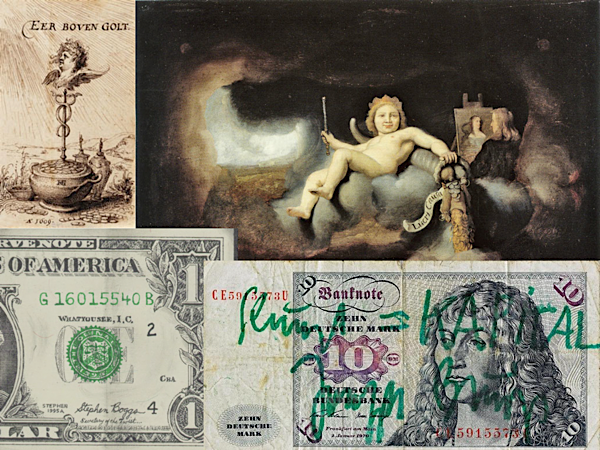Art and Money

When a photograph by a contemporary artist sells for $4.3 million, it makes headlines. Why have worldwide art sales soared even during a global financial crisis of epic proportions? What makes a work of art, a gold coin, or a dollar bill valuable? Both money and art raise questions about value—its source, how it can be measured, certified, produced, and negotiated through social transactions and systems of exchange. This class takes up these and other questions that have fascinated and troubled artists, economists, and consumers for centuries. The seminar explores how aesthetic, social, and economic values have been negotiated through the making, marketing, and exchange of art in early modern Europe and later capitalist societies. Our touchstone will be the complex art market that developed in northern Europe in the seventeenth century. It will allow us to study relations between commercial and artistic innovation, between patronage and market systems, and to examine how early modern economies of art resemble and how they differ from the global art market of today. Our case studies include works by artists as diverse as Rembrandt and Joseph Beuys, all of whom posed questions in their art about the relationships between art and money. Discussion topics include: art as a medium of exchange, currency as an art form, the imagery of money, prints, copies and replicas, trompe l'oeil, credit and credibility. We will look at what the production of copies, multiples, fakes and forgeries can reveal about the shifting notions of originality and authenticity. Readings and discussions will introduce theories and concepts of value that will help us investigate what art and money have in common, where they diverge, and how they negotiate social and material values.
Estimated Cost of Materials: $50-100.
HISTART concentration distributions: 3. Early Modern, 4. Modern and Contemporary, D. Europe and the US
Course Requirements: Attendance and informed participation in class discussions, posted responses to readings, one in-class presentation, a midterm quiz (20%) a short (5-7 page paper) and a critical/ research paper (12-15 pages).
Intended Audience: art history majors and minors as well as undergraduates in any field with an interest in the topic. Some knowledge of art history, art, or economics is recommended.
Class Format: 2-80 minute seminar meetings weekly
Textbooks/Other Materials: Weekly readings available in PDF on Canvas.